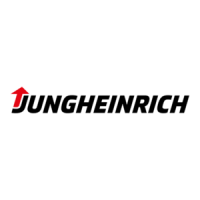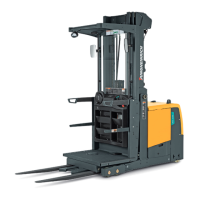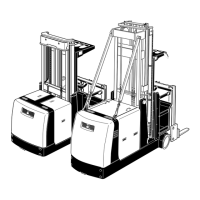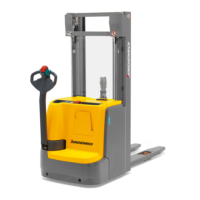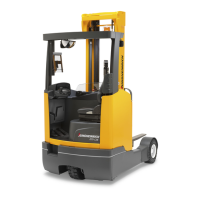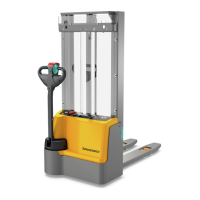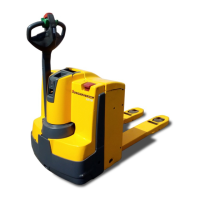What does Error 338 mean on my Jungheinrich EKS 310k?
- JJason MarshAug 20, 2025
Error 338 indicates that the foot switch was pressed during the power-up test. To resolve this, do not press the foot switch and switch the truck off and on again.
What does Error 338 mean on my Jungheinrich EKS 310k?
Error 338 indicates that the foot switch was pressed during the power-up test. To resolve this, do not press the foot switch and switch the truck off and on again.
What does Error 144 mean on Jungheinrich Forklifts?
Error 144 means that the truck has quit the guidance wire. To fix this, restore wire guidance.
What does Error 344 mean on Jungheinrich Forklifts?
Error 344 indicates an issue with the personal safety system. The PSA scanner may be contaminated. Clean the scanner.
What does Error 330 or Error 334 mean on Jungheinrich EKS 310k?
Error 330 or Error 334 indicates that the travel control button was pressed during the power-up test. To resolve this, do not press the travel control button; switch the truck off and on again.
What does Error 331 or Error 335 mean on Jungheinrich EKS 310k Forklifts?
Error 331 or Error 335 indicates that the hydraulic control button was pressed during the power-up test. To resolve this, do not press the hydraulic control button; switch the truck off and on again.
What does Error 332 or Error 336 mean on Jungheinrich Forklifts?
Error 332 or Error 336 indicates that a function preselect key was pressed on the control panel during the power up test. To resolve this, do not press any function preselect key, and switch the truck off and on again.
What does Error 339 mean on Jungheinrich Forklifts?
Error 339 indicates that a key was pressed below the display unit during the power-up test. To resolve this, do not press any key, and switch the truck off and on again.
Why won't my Jungheinrich EKS 310k load lift?
If the load cannot be lifted, here are some possible reasons: * The truck may not be operational. In this case, carry out all measures listed under “Truck does not start.” * The battery charge may be too low, activating the lift cutout. Check the battery charge and charge the battery if necessary. * There might be insufficient hydraulic oil. Check the hydraulic oil level and replenish if needed. * A fuse might be blown. Check the fuses.
Why is rapid travel disabled on my Jungheinrich EKS 310k?
Rapid travel may be disabled due to the following reasons: * The Main Lift / Aux. Lift is raised above 0.5m. Lower the Main Lift / Aux. Lift below 0.5m. * WG search mode is activated. Align the truck or turn off WG mode. * No test run has been performed. Perform lifting and lowering.
What to do if my Jungheinrich EKS 310k truck cannot be steered?
If the truck cannot be steered, consider these potential causes: * The truck may not be operational. Perform all the checks listed under “Truck does not start.” * The narrow aisle mode switch may be pressed. Switch off the narrow aisle travel function.
| Drive | Electric |
|---|---|
| Load Capacity | 1000 kg |
| Lift Height | Up to 10700 mm |
| Weight | 3950 kg (without battery) |
| Battery Voltage | 48 V |
Overview of the EKS 310's use, design, and component identification.
Details technical specs, performance data, dimensions, and EN norms.
Information on truck labels, data plates, and capacity charts.
Methods for transporting the truck, including crane loading and securing.
Procedures for moving the truck without a battery and initial setup.
Safety regulations for handling acid batteries and general maintenance.
Information on battery types, charging procedures, and removal.
How to check battery health, acid levels, and understand discharge indicators.
Rules for driver authorisation, truck use, damage reporting, and safety devices.
Variants of control panels and detailed explanation of display unit symbols.
Steps for starting the truck, travelling, steering, braking, and lifting/lowering.
Guides for order picking, stacking, parking, and troubleshooting common faults.
Safety measures, personnel requirements, and cleaning guidelines for maintenance.
Service checklists, lubrication schedules, and procedures for parts replacement.
Procedures for decommissioning, recommissioning, and final disposal.
